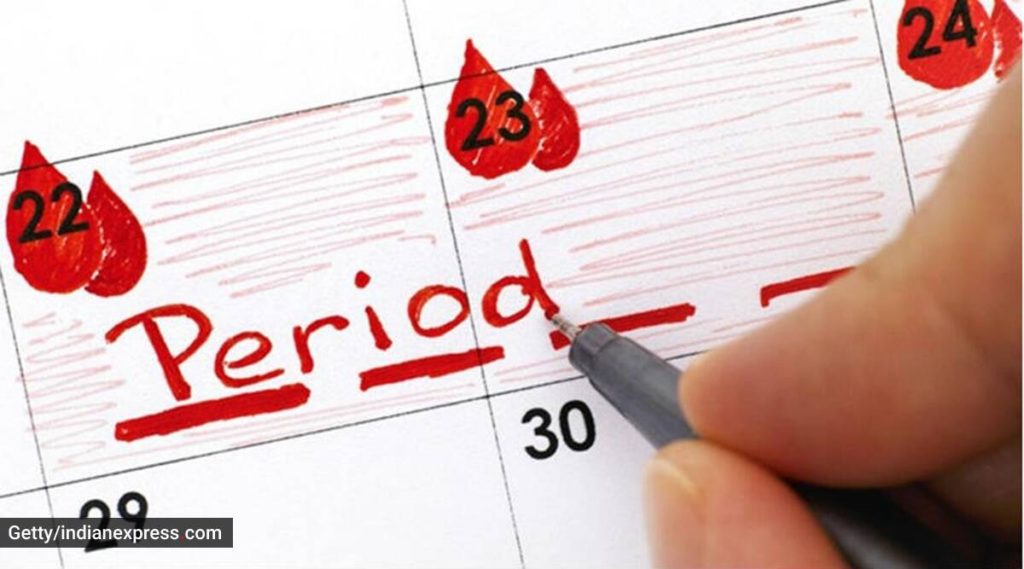
The human body experiences pain. According to an article published in Nature, pain happens when “neural sensors in the skin, muscles, joints or organs register a potentially harmful sensation, such as heat or tissue damage” (Dance 2019).[i] However, what I am interested here is the social construction of ‘pain’. How is pain experienced, expressed and differentially understood in our society? While men and women experience similar pain in biological terms, women are taught, socialised and trained to accept pain as normal. They are taught to be silent, not speak about it, and embarrass others. Though women are considered the ‘weaker sex, they are trained to be ‘strong’ when one is in pain. Pain here is taught to be hidden and ignored, especially from their husbands, children, etc.
This culture of silence in our society is most apparent about menstrual pain. I have observed how teachers avoided discussing ‘menstruation’ or ‘menstrual taboos’ during my school days. Any girl who got her periods in school was sent directly home, leaving everyone in a state of hushed curiosity. The teacher would refer to menstruation or periods as ga tu beya (in everyday Assamese), meaning ‘fever’ or ‘not well’. Even mothers taught menstruation to be called sua huwa (meaning impure or not clean). Thus, a girl is socialised on how periods are not clean and pure from an early age. In fact, before a girl learns about the biological reasons behind menstruation, she is taught the societal expectations for those five days.

In Assam, when a girl attains puberty for the first time, she is embarrassed or shy to speak about it. Puberty rituals are a mechanism through which women acquire the cultural ideas and values to shape images of themselves. Leela Dube writes how a menstruating girl is secluded for some days. It is celebrated as an occasion by serving her special food and informing the relatives and friends, giving her a ritual bath, presenting her new clothes, jewellery, bangles etc. In Karnataka, at her first menstruation, a girl is fed with dry coconut, milk, ghee, etc. (Dube 1988).[ii]
Similarly, in Assamese society, a menstruating girl is given a separate room to stay and serve boil food, fruits, etc. The ritual is called tuloni Biya or xoru biya (small wedding) in Assam. For the next few days, she is secluded from others and not allowed to touch anything except the necessary things provided to her. She is given a traditional mekhela chadar (three-piece clothing in Assam) to wear till the rituals of seven days of seclusion is completed. In rural societies, a menstruating girl is asked to sleep on a bed of straw spread on the floor in one corner of the room. She is not allowed to see the sun directly as well as any male member of the family.
The seclusion period ends after she is bathed on the seventh day, and once, she takes the blessings of the Banana Tree (supposedly her future husband). The banana tree, which is a symbolic form of her future husband, becomes the totem that needs to be taken care of by the family. While she remains in absolute seclusion from the rest of the society for seven days, returning to school after staying absent for her first periods ritual is like a ‘walk of shame’. This is mostly observed in co-education schools. In these whole processes of seven days of seclusion, menstruation is celebrated with joy and laughter while ignoring the pain and trauma a girl goes through during this period. She is taught about the ‘rites of passage’ and her ways of becoming an ‘acceptable and ideal girl’ after attaining puberty. Nowhere in the ritual, a girl is taught that menstruation is normal. It is not a sickness, can be painful, and nothing to be ashamed of.
One can here refer to sociologist Erving Goffman. Goffman uses the concept ‘stigma’ in his book Stigma: Notes on the Management of Spoiled Identity in 1863[iii]. He observes how a person is socially stigmatised and considered unacceptable in society. These people tend always to strive to adjust to the ‘normal’ of society. For Goffman, individuals with physically deformed, mental illness, drug addicts etc., are looked into differently, thus impacting stigmatised identities. Now, menstruation and discussing menstruation is always taboo. Women having periods are stigmatised and excluded from different festivals, occasions etc.
Feminist scholars have worked on menstruation and health issues. However, I want to point out here how ‘expressing pain’ in menstruation is seen as a ‘stigma’. A women’s physical health and pain is not a matter of discussion. One such example is PCOD (Polycystic Ovarian Disease). A large number of young women experiences PCOD at a very early stage. While it not only breaks the monthly periodic cycle but its impact is seen on bodily changes. Obesity, facial hair, pimples, etc., are some kinds of symptoms that are experienced during PCOD. Instead of considering it as a relevant issue in our society, it is seen as a stigmatised situation where parents are ashamed of speaking about it to others. Many young girls are not allowed to hang around and share food with girls having PCOD for fear of getting transmitted. Moreover, these women are not considered eligible for marriage because of the fear that they may not be able to bear a child.
To add to the trauma of remaining silent, my mother always taught me to adjust to my monthly periodic pain. Taking pain killers are usually asked to avoid the fear of harming our reproductive glands. There is no space where one can discuss menstrual issues.
Both our public and private spaces are patriarchal. This means our homes and the ‘outside’ -public spaces such as schools, colleges, streets, buses, markets, etc. are constructed in a patriarchal manner. It is because of these patriarchal constructions of spaces that women’s voices remain unheard. While women work, cook, feed their children, take care of the household carrying the pain for four to five days, menstrual leave in offices or other workplaces is a practice never discussed or taken into consideration. In the year 2020, Zomato announced a ‘period leave’ for female employees up to 10 days. This, however, sparked a contentious debate. While some showed support for such a move, others felt this would alienate women’s work. Barkha Dutt, a prominent journalist, mentioned that this would “ghettoise” women[iv].
It seems that even this decision of Zomato was a break in the silence that we all learn to live in. Whether to buy a sanitary napkin in the presence of a male seller, whether one should discuss my menstrual pain with my brother or a male friend remains questions when menstruation itself is stigmatised. It is a stigma that I face in everyday life. Complaining about monthly periodic pain is considered to be an excuse for staying in bed. Even advertisements fail to show the pain of period cramps. Advertisements of companies like Whisper, Stayfree, Sofy, etc. glorify girls wearing their sanitary pads. But the pain is invisibilised.
There appears to be a conspiracy of silence. People collectively choose not to discuss in public places though they are personally aware of it, and hence they remain undiscussable. Therefore, as Zerubavel mentions, this ‘conspiracy of silence’ is a public form of denial (Zerubavel 2010).[v]
[i] Amber, Dance. (2019). Why the sexes ’don’t feel pain the same way. Nature. https://www.nature.com/articles/d41586-019-00895-3, accessed on 24th January 2021.
[ii] Dube, Leela. (1988). On the Construction of Gender: Hindu Girls in Patrilineal India. Economic and Political Weekly. 23(18): WS11-WS19.
[iii] Goffman, Erving. (1963). Stigma: Notes on the Management of a Spoiled Identity, Simon and Schuster: New York.
[iv] https://www.dw.com/en/zomato-spraks-menstruation-debate-in-india/a-55006001, accessed on 24th January 2021.
[v] Zerubavel, Eviatar. (2010). The social sound of silence: Toward a Sociology of Denial. Cambridge University Press.
***
Ashlesha Gogoi is a 2nd year MA student in the Department of Sociology, Cotton University, Assam.

[…] https://doingsociology.org/2021/03/27/menstruation-pain-and-silence-ashlesha-gogoi/, accessed on 9th July 2021. […]